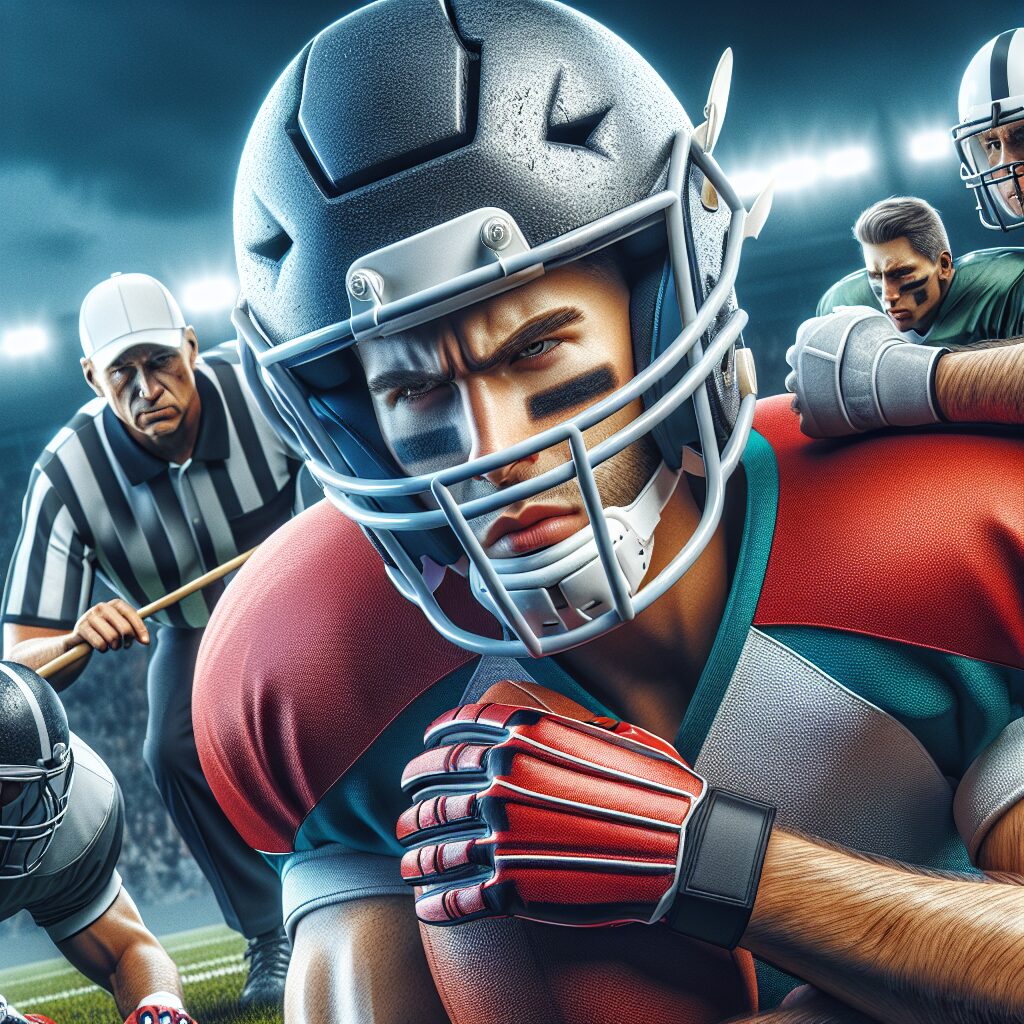Size in different sports plays a crucial role in determining an athlete’s performance and success on the field. Whether it is the towering presence of basketball players or the agile and compact physique of gymnasts, size can significantly impact an athlete’s abilities. In sports such as basketball, height is a defining characteristic that allows players to dominate the court and excel in rebounding and blocking shots. On the other hand, sports like gymnastics demand a smaller body frame that enables athletes to perform intricate, gravity-defying movements with precision and grace. Understanding the diverse impact of size in various sports unlocks a deeper appreciation for the dedication and uniqueness of athletes across different disciplines.
Moving forward, it is fascinating to explore the specific impacts and unique features of size in different sports. The influence of size in sports goes beyond mere physical attributes; it affects an athlete’s performance, strategy, and even their roles within the team. For instance, in sports such as rugby or American football, size often determines the position an athlete plays, with larger individuals preferred for positions that require strength and power, such as linemen. Additionally, size can dictate an athlete’s speed, agility, and endurance, leading to various playstyles and strategies across different sports. By delving into the key takeaways of this comparative guide, we can gain a deeper understanding of how size can make or break an athlete’s success in their respective sports.
Key Takeaways
1. Size plays a critical role in various sports and can significantly affect an athlete’s performance and success.
2. Different sports have distinct size requirements and regulations, ranging from height and weight restrictions to equipment measurements.
3. Size requirements in sports often vary based on the specific position or role an athlete plays, emphasizing the need for diverse body types and skill sets within a team.
4. Some sports prioritize height and reach, such as basketball and volleyball, where taller athletes tend to have an advantage, while other sports value strength and bulk, like football and rugby.
5. While size can be advantageous in certain sports, factors like skill, technique, strategy, and teamwork are equally essential for achieving success on the field or court.
What is the Importance of Size in Different Sports?
Size and its Influence in Sports
Size plays a significant role in various sports, affecting an athlete’s performance, position on the field, and overall success. This section explores how size impacts different aspects of sports.
The Effect of Size on Performance
The size of an athlete can greatly influence their performance in a particular sport. In some sports, such as basketball or American football, height can provide an advantage when it comes to reaching and blocking opponents. Conversely, in sports like gymnastics or figure skating, a smaller and more compact body type may be preferred for better agility and balance.
Positioning and Size in Team Sports
In team sports, an athlete’s size often determines their position on the field. For example, in soccer, taller players may be placed as defenders or goalkeepers to take advantage of their height when defending against aerial attacks. In contrast, players with smaller physiques may be placed in more agile positions like forwards or midfielders to excel in speed and quick movements.
The Role of Size in Individual Sports
In individual sports such as tennis or wrestling, size can play a crucial role in determining success. In sports like boxing, weight classes are established to ensure fair competition between opponents of similar size. Additionally, in sports like swimming, a taller and longer-limbed physique can provide a better advantage in reaching greater speeds.
The Relationship between Size and Injury Risk
The size of an athlete can also impact their susceptibility to injuries while participating in sports. Biomechanical factors, such as the stress placed on joints and muscles, differ depending on an individual’s size. Understanding how size affects injury risk can help athletes and coaches develop appropriate training and injury prevention strategies.
Size in Different Sports: A Comparative Guide
In this section, we compare the importance of size in various sports and highlight specific examples to provide a comprehensive guide.
Height in Basketball and Volleyball
In sports such as basketball and volleyball, height is often considered essential. Taller players have an advantage in reaching higher to block shots or spike the ball, leading to increased scoring opportunities and defensive abilities.
Weight in Combat Sports
In combat sports like boxing and mixed martial arts, weight classes are crucial to ensure fair matchups. Fighters with similar weights compete against each other, primarily to prevent potential injuries and maintain a level playing field.
Size Categories in Olympic Weightlifting
Olympic weightlifting utilizes different weight categories to ensure fair and equal competition. Athletes compete with others of similar weight to determine their strength and lifting abilities, rather than being judged solely on the maximum weight lifted.
Body Composition in Gymnastics
Gymnastics requires a specific body composition that favors strength, flexibility, and agility. Athletes with a lean and muscular physique tend to excel in this sport, as they can execute complex maneuvers and maintain excellent body control.
Tips for Optimizing Performance based on Size
- Understand your body type and leverage it to excel in a sport where your physique is an advantage.
- Consult with coaches or trainers to develop specialized training programs that cater to your size and optimize performance.
- Ensure proper nutrition and conditioning to maintain a healthy body composition suitable for your chosen sport.
- Focus on improving skills and techniques that compensate for any potential disadvantages related to size.
- Regularly engage in injury prevention exercises and techniques that are specific to athletes with your body type.
With a deep understanding of how size influences sports performance and the right strategies to optimize performance based on size, athletes can enhance their chances of success in their respective sports.
Frequently Asked Questions
1. Which sports require the largest athletes?
In sports like basketball and American football, larger athletes tend to have an advantage due to their physical presence and ability to dominate the game. These sports require athletes with significant size and strength to excel.
2. Are there any sports where being smaller is an advantage?
Yes, sports like gymnastics and figure skating often favor athletes who are smaller in size. Their smaller stature allows for greater agility, flexibility, and precision movements, which are essential in these sports.
3. How does size impact performance in endurance sports?
In endurance sports like long-distance running and cycling, being lean and having a lower body weight is often advantageous. However, having a larger lung capacity and a more muscular build can also be beneficial in specific endurance events, such as swimming.
4. Does size affect an athlete’s speed?
Yes, size can impact an athlete’s speed. Generally, smaller athletes have an advantage in sports that require quick bursts of speed, such as sprinting and certain positions in soccer. Conversely, larger athletes may have an advantage in sports that rely more on momentum and strength, such as rugby or sumo wrestling.
5. Are there any sports where size doesn’t matter?
In some sports, such as golf, archery, or shooting, size plays a minimal role in an athlete’s performance. These sports rely more on technique, precision, and mental focus rather than physical size or strength.
6. Can smaller athletes excel in team sports?
Absolutely! While size can be an advantage in certain team sports like basketball or rugby, smaller athletes can use their agility, quickness, and skill to outmaneuver larger opponents. Many successful athletes in team sports have proven that determination and talent can outweigh physical size.
7. Is there an ideal size for athletes in each sport?
There is no one-size-fits-all answer to this question as each sport has different requirements and positions within the sport have diverse demands. Athletes come in varying shapes and sizes, and what matters more than size is the combination of skills, technique, and physical fitness levels that allow them to perform at their best.
8. Can size determine an athlete’s injury risk?
While size alone may not directly determine an athlete’s injury risk, certain biomechanical factors associated with size can play a role. For example, taller athletes may be more prone to certain joint or back issues, while smaller athletes may face increased injury risk due to the physical demands placed on their bodies. However, proper training, conditioning, and caution can mitigate these risks.
9. Does size impact an athlete’s career longevity?
Size can potentially influence an athlete’s career longevity, but it is not the sole determining factor. Factors such as genetics, training regimen, overall fitness, and injury history all play crucial roles in an athlete’s career span. It’s essential for athletes of all sizes to prioritize injury prevention and overall well-being to optimize their careers.
10. Can size be improved or changed in sports?
While an athlete’s genetic makeup largely determines their natural size, certain aspects such as muscle mass or body composition can be improved through appropriate training and nutrition. However, it is important to remember that every body is unique, and optimal performance is the result of a combination of factors beyond just size.
Final Thought on Size in Different Sports: A Comparative Guide
Understanding the role of size in different sports is crucial for both athletes and sports enthusiasts. While size can provide advantages in some sports, it should not be seen as the ultimate deciding factor for success. Ultimately, it is a combination of various factors, such as skills, technique, determination, and overall fitness, that contribute to achieving greatness in sports. Embracing diversity in body types and appreciating the talents of athletes of all sizes is essential for the development and enjoyment of sports.
Size may be a topic of fascination and discussion, but it should not overshadow the meaningful achievements and contributions made by athletes, regardless of their size. It is the dedication, hard work, and passion for their respective sports that truly make athletes stand out, and size should never be a limiting factor when it comes to pursuing athletic excellence.




